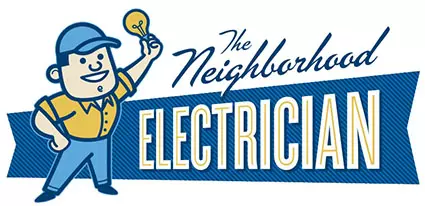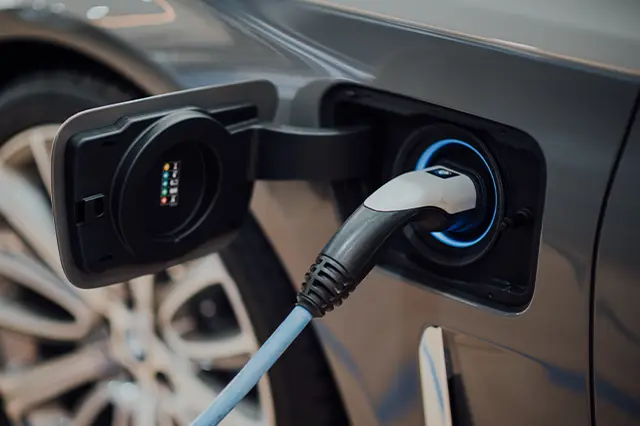Everything You Need To Know About Installing An Electric Vehicle Charger At Home
Electric vehicles are becoming more and more popular, but where do you get the electricity to power your car? Many people are turning to residential electric vehicle (EV) chargers, which allow you to charge your car at home. But what does it take to install an EV charger at home? In this blog post, we’ll dive into everything you need to know about installing an electric vehicle charger at home, from safety considerations to cost estimates. Read on for the full scoop!
What is an electric vehicle charger?
Electric vehicle chargers, also known as EV charging stations, are devices that charge electric vehicles. They come in many different shapes and sizes, but all have the same purpose: to deliver electricity to an electric vehicle so it can power the vehicle’s battery.
There are many different types of electric chargers, but they can broadly be classified into two categories: Level 1 and Level 2 chargers. Level 1 chargers use a standard 120-volt outlet and can charge an electric vehicle slowly. Level 2 chargers use a 240-volt outlet and can charge an electric vehicle much faster.
The majority of public EV charging stations are Level 2, as they can charge a vehicle in a shorter amount of time. However, Level 2 chargers are also more expensive than Level 1 chargers, so they may not be an option for everyone.
If you’re thinking about installing an EV charger at home, there are a few things you need to keep in mind. First, you’ll need to decide what type of charger you want. If you have a 240-volt outlet available, a Level 2 charger will be the best option. However, if you only have a 120-volt outlet, a Level 1 charger will be sufficient.
Next, you’ll need to consider the amperage of the charger. The amperage determines how much electricity the charger can deliver at once. A higher amperage means that the charger can charge your electric vehicle faster.
Finally, you’ll need to decide if you want a hardwired or plug-in charger. A hardwired charger is installed directly into the wall and requires an electrician, while a plug-in charger is simply plugged into an existing outlet.
How do electric vehicle chargers work?
Electric vehicle chargers work by providing electric power to charge the battery of an electric vehicle. There are many different types of electric vehicle chargers available on the market, but they all serve the same purpose: to provide electricity to an electric vehicle’s battery. The charging process is typically completed in two to four hours, depending on the type of charger being used and the size of the battery.
The first step in understanding how electric vehicle chargers work is identifying the different types of connectors that are available. The three most common types of connectors are J1772, Type 2 Mennekes, and CHAdeMO. J1772 is the standard connector for Level 1 and Level 2 AC charging in North America, while Type 2 Mennekes is commonly used in Europe and Asia. CHAdeMO is a quick-charging standard that is typically found at public charging stations.
Once you have identified the type of connector you need, the next step is to determine which voltage your home electrical system can accommodate. Most residential homes in North America have 240-volt service, which is required for Level 2 AC charging. For quick-charging with a CHAdeMO connector, you will need access to a 480-volt circuit. If your home does not have 240-volt service, it can be installed by an electrician.
The last step in understanding how electric vehicle chargers work is to select the right charger for your needs. There are many different manufacturers and models of electric vehicle chargers available on the market, so it is important to research and compare different products before making a decision. Some factors to consider include output power, compatibility with your vehicle, and price. Once you have selected a charger, all that is left to do is plug it in and begin charging your vehicle’s battery.
What are the benefits of installing an electric vehicle charger at home?
Electric vehicles are becoming more popular each year, as drivers look for ways to save money on fuel and reduce their environmental impact. If you’re considering making the switch to an electric vehicle, you may be wondering if it’s worth installing your own electric vehicle charger at home. Here are some of the benefits of having an EV charger at home:
1. Save money on charging costs: When you charge your EV at home, you’ll avoid paying public charging rates, which can be much higher than residential rates.
2. Convenient charging: Having an EV charger at home means you can charge your car whenever you want, without having to find a public charging station.
3. peace of mind: Knowing that you have a reliable way to charge your EV can give you peace of mind, especially if you live in an area with few public charging options.
4. Increase your home’s value: Installing an EV charger may increase the value of your home, making it a good investment for the future.
5. Reduce your carbon footprint: By charging your EV at home, you can reduce your carbon footprint, as the electricity you use to charge your vehicle is likely sourced from renewable energy sources like solar or wind power.
Overall, having an EV charger at home can be a great choice for anyone considering making the switch to an electric vehicle. It can save you money and provide convenience, peace of mind and environmental benefits.
How to choose the right electric vehicle charger for your home
If you’re thinking about purchasing an electric vehicle, you’ll also need to think about installing a home charger. Here’s everything you need to know about choosing the right electric vehicle charger for your home.
There are a few things to consider when choosing an electric vehicle charger for your home. First, you’ll need to determine the amperage that your home circuit can handle. Most homes can handle up to 30 amps, but it’s always best to check with a professional electrician before making any assumptions.
Next, you’ll need to decide what type of connector you want. The most common types are J1772 and Level 2 Connectors. J1772 connectors are the standard in the United States, while Level 2 connectors are more common in Europe.
Finally, you’ll need to decide how much power you want your charger to have. Level 1 chargers typically have 1-2 kilowatts of power, while Level 2 chargers have 3-6 kilowatts of power. Higher-powered chargers will charge your electric vehicle faster, but they may also be more expensive.
Once you’ve considered all of these factors, you should be able to choose the right electric vehicle charger for your home.
How to install an electric vehicle charger at home
There are a few things you need to know before installing an electric vehicle charger at home. Here is a step by step guide:
1. First, you need to find a good spot to install your charger. You want to make sure it’s close to an outlet and easily accessible.
2. Once you’ve found the perfect spot, it’s time to start installing the charger. Most chargers come with everything you need, but if not, you can purchase the necessary parts at your local hardware store.
3. Follow the instructions that come with your charger, or those provided by the manufacturer, to properly install the unit. This usually involves mounting the charger on the wall and connecting it to an electrical outlet.
4. Finally, test your new charger out by plugging in your electric vehicle and making sure it charges properly.
That’s all there is to it! With a little bit of planning and effort, you can easily install an electric vehicle charger at home so you’re never left stranded without a charge again.
Conclusion
Installing an electric vehicle charger at home is a great way to ensure you always have the power you need when it’s time to take your car out for a spin. With the right knowledge and tools, installing an EV charger can be done safely and quickly. From deciding what type of charger is best for your needs, to making sure everything is up-to-code with local regulations, there are many factors that need to be taken into consideration before you get started. Taking all these steps will ensure your EV charging system works safely and efficiently for years to come.

